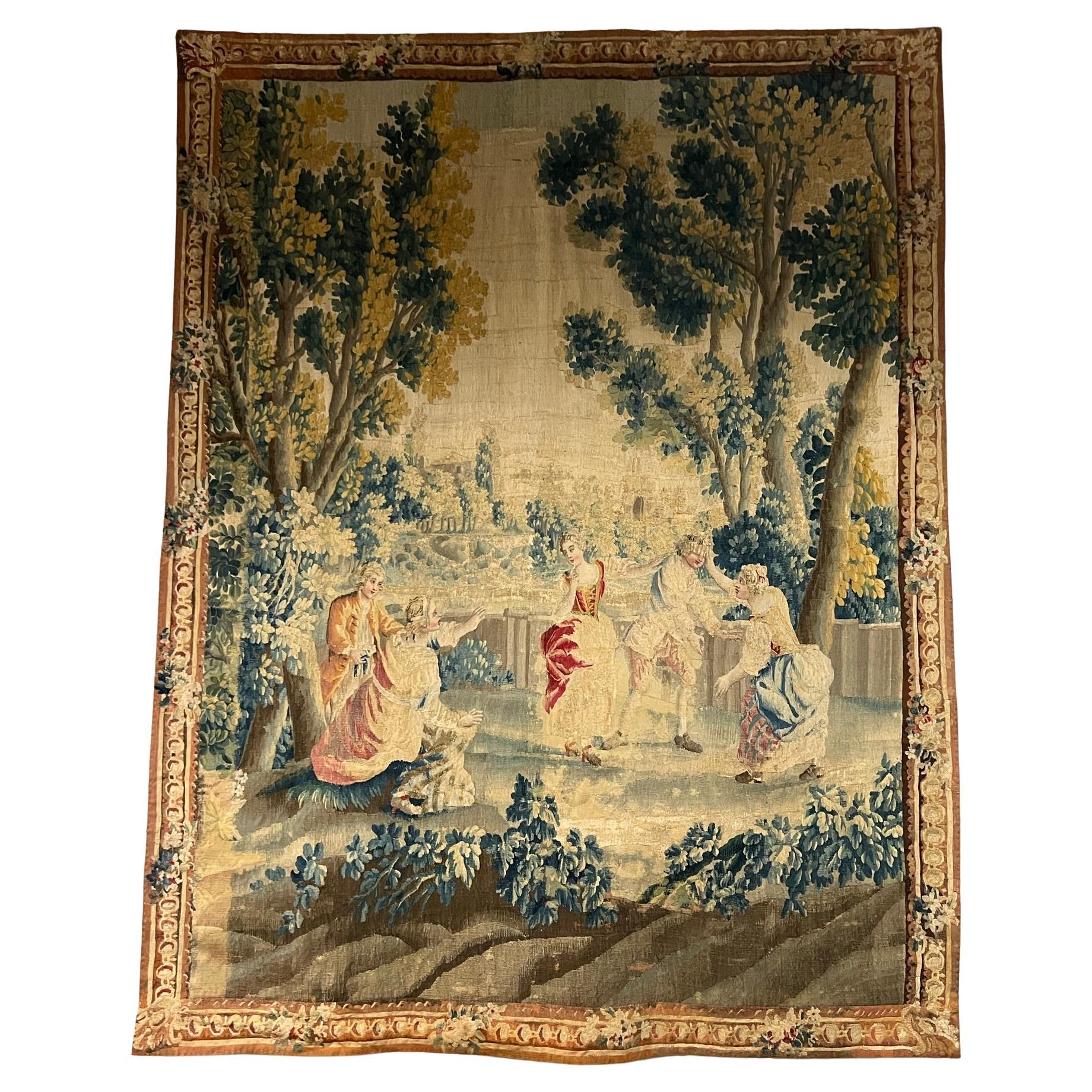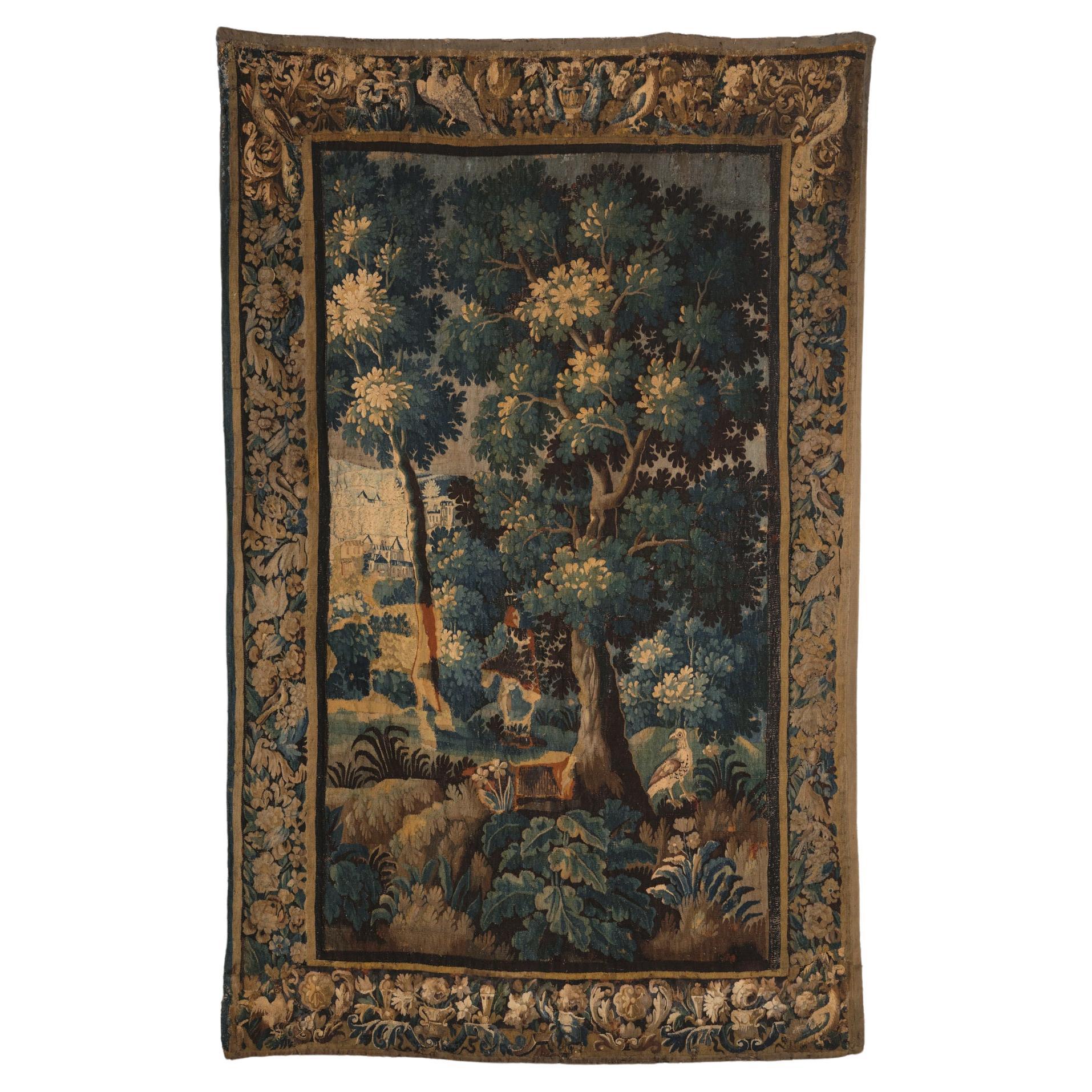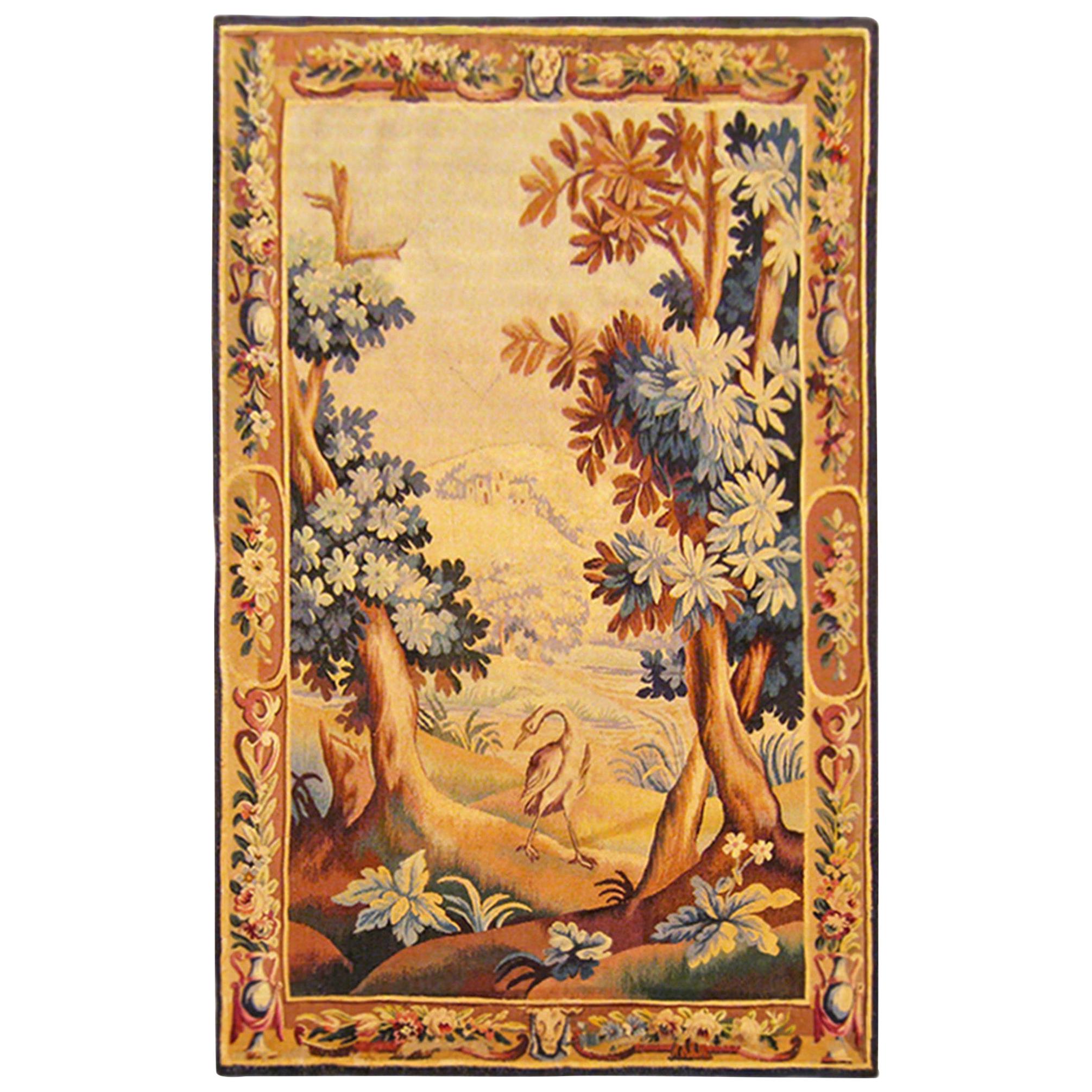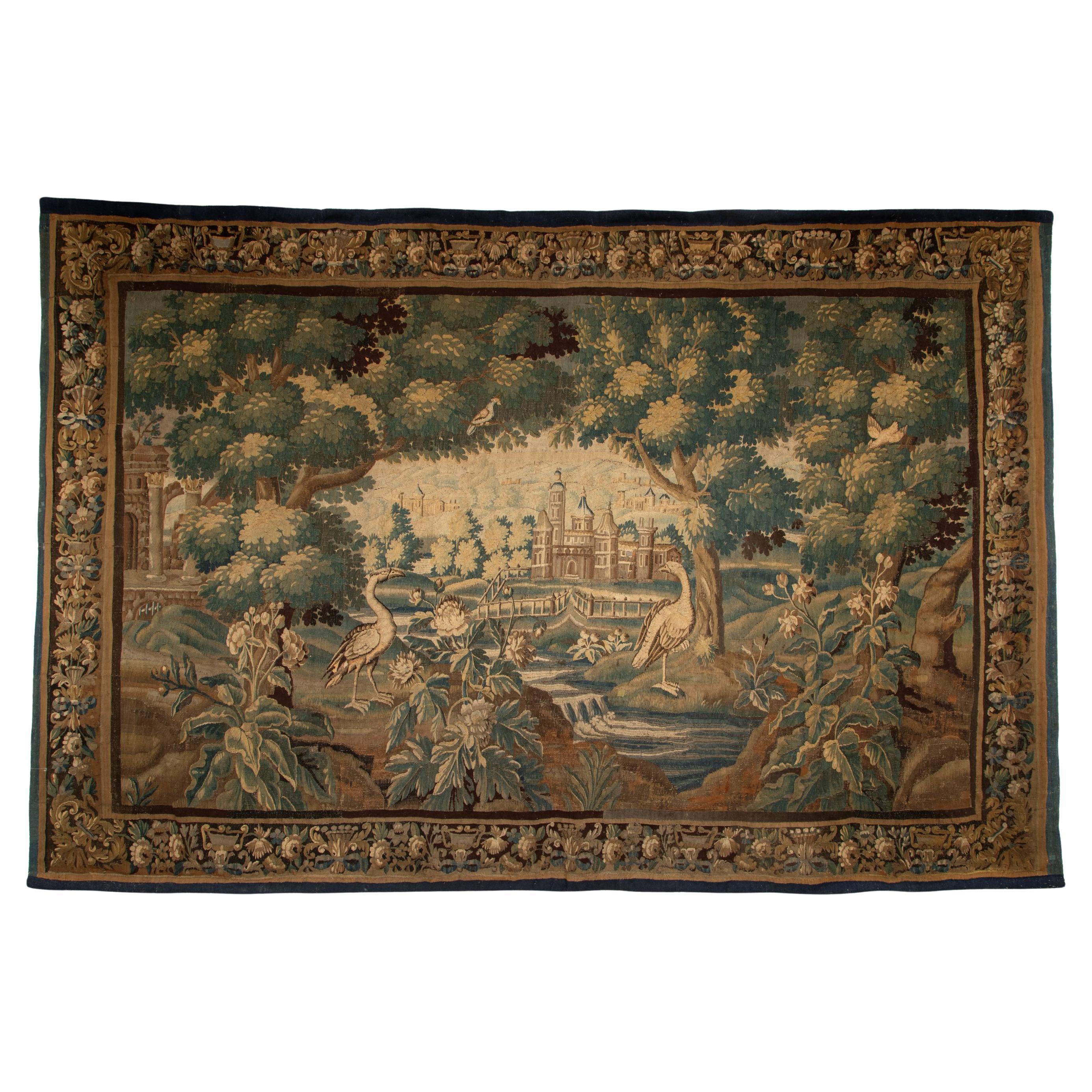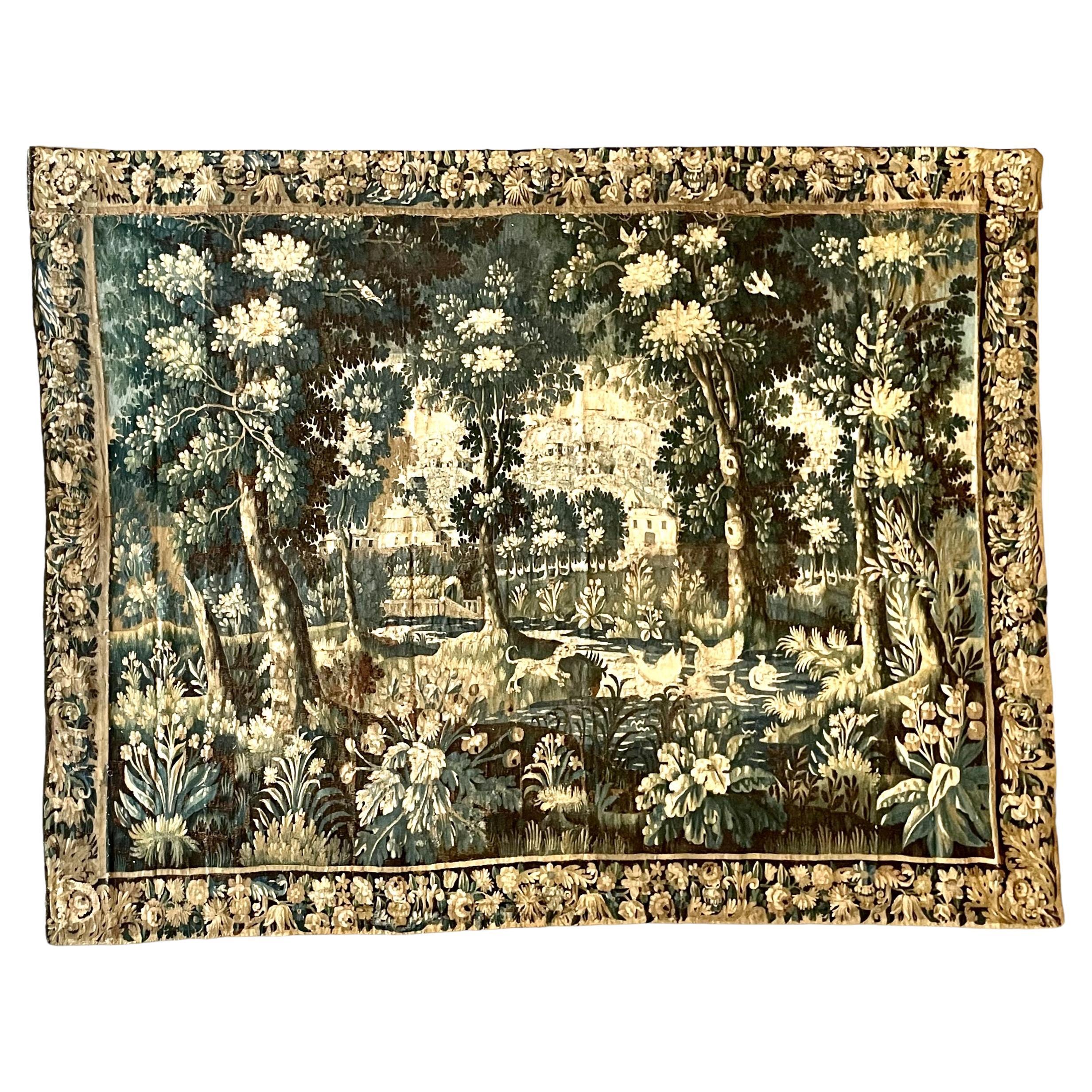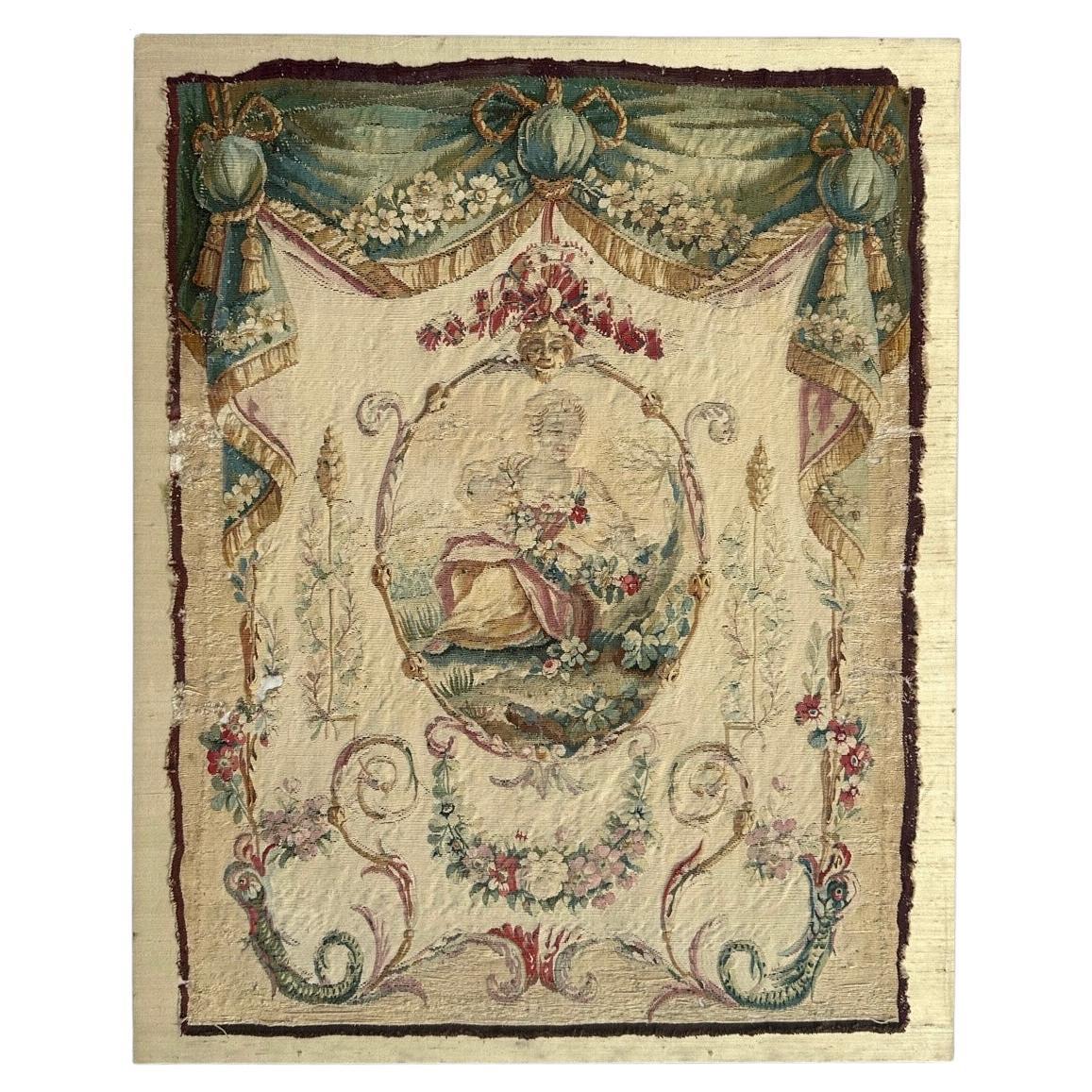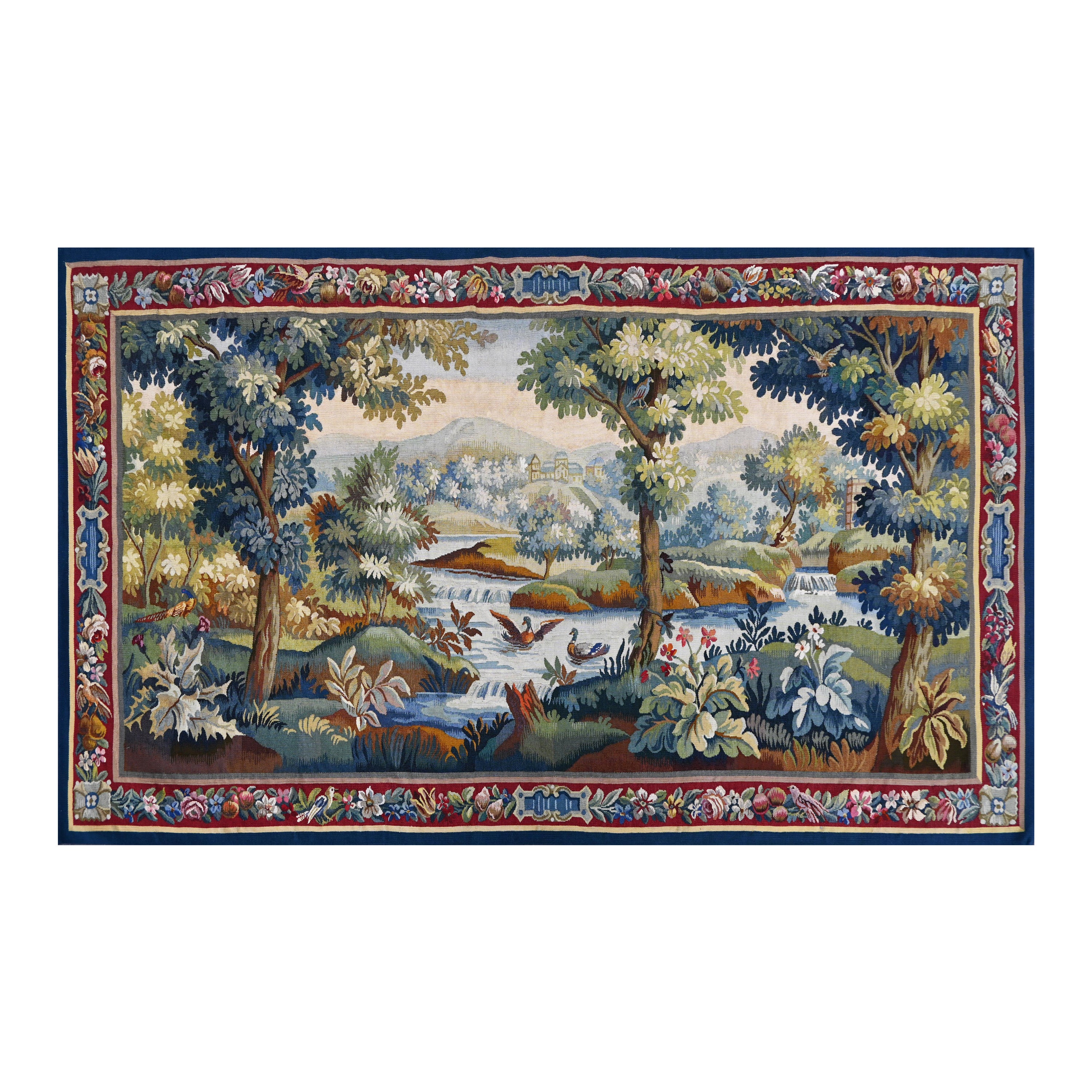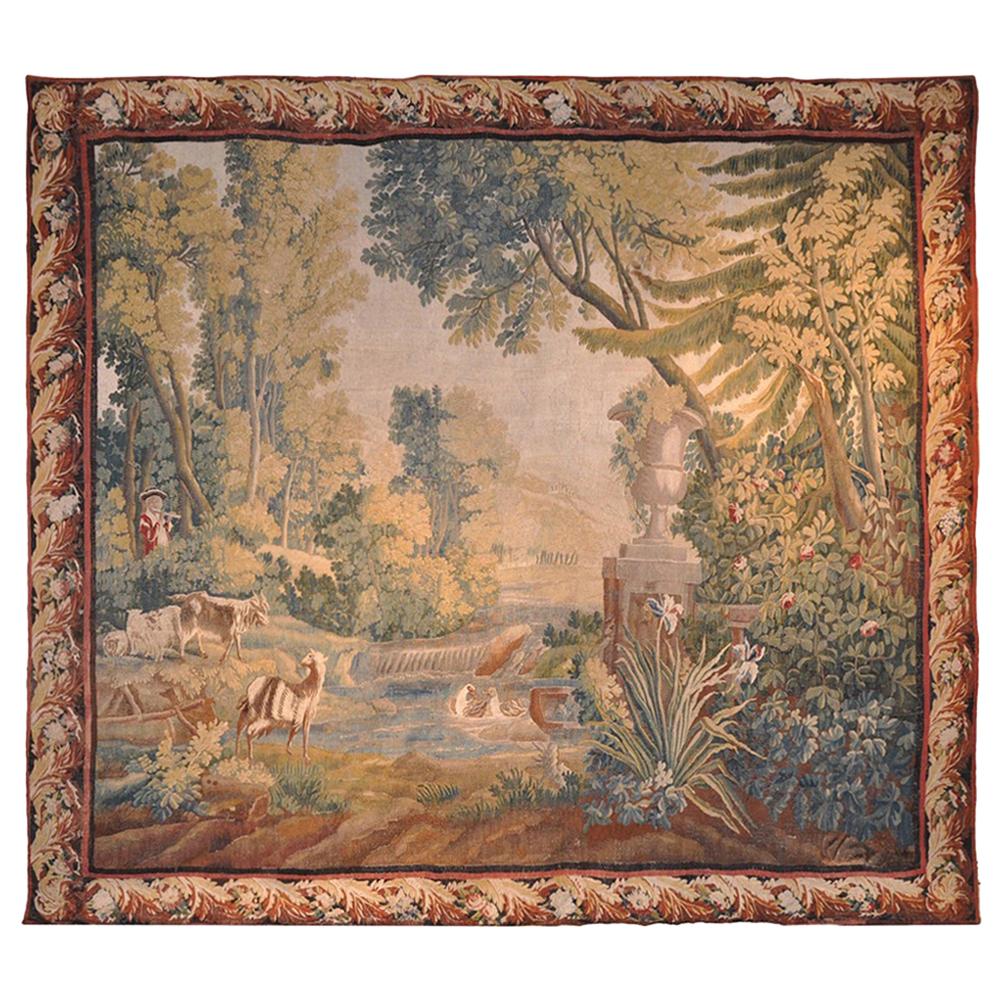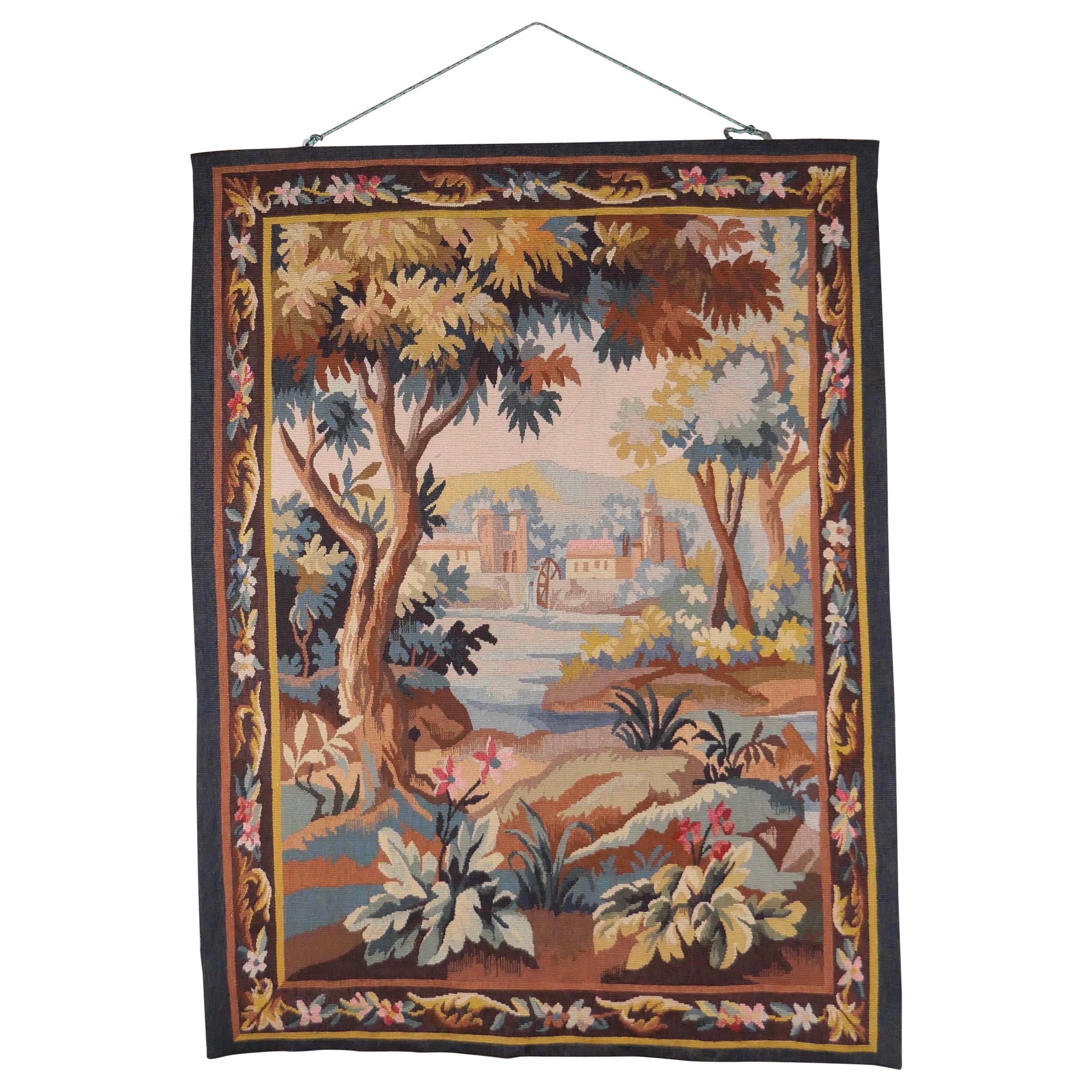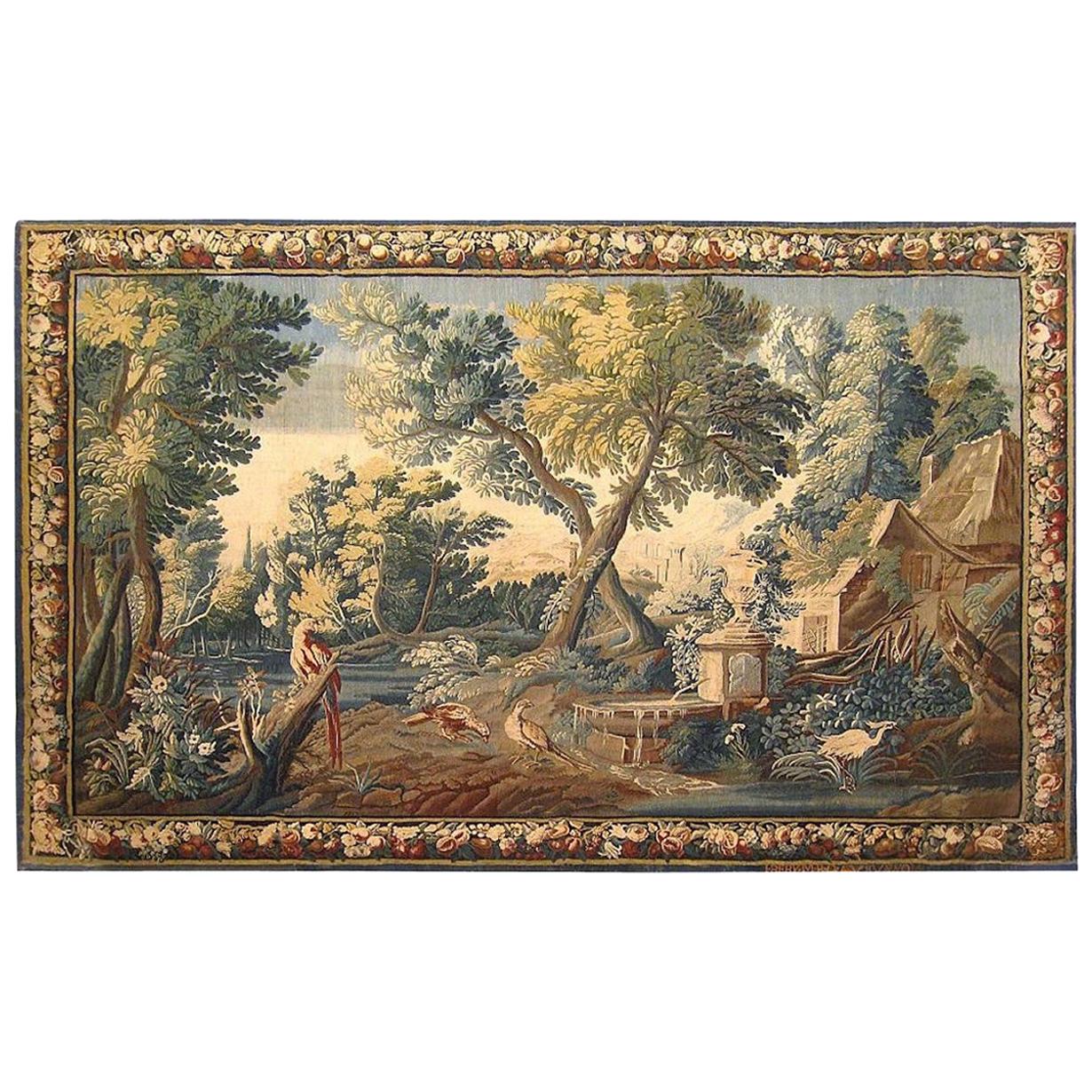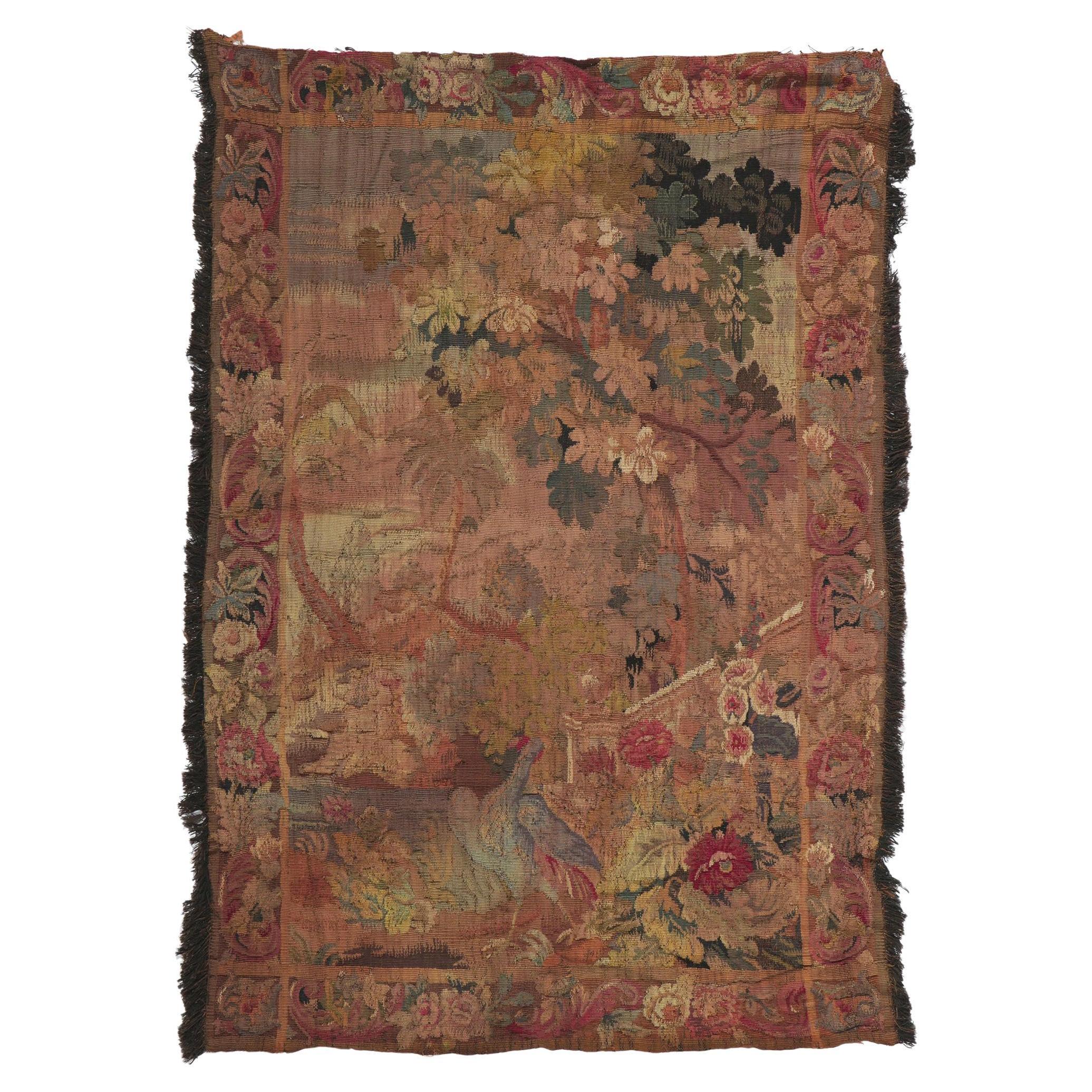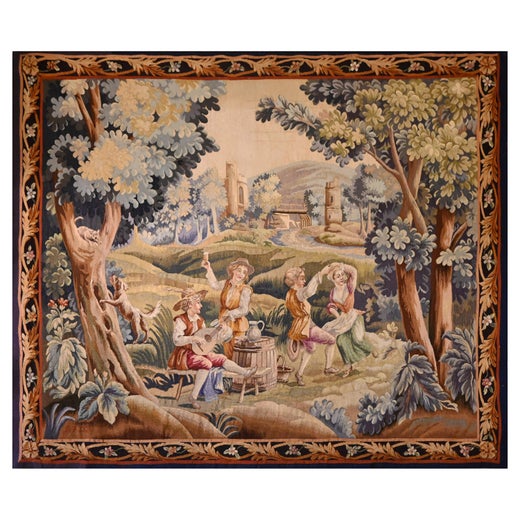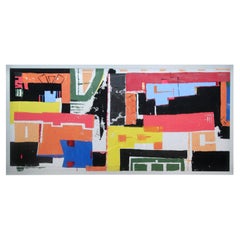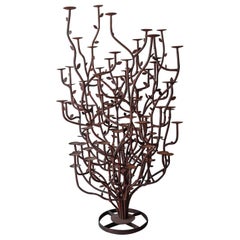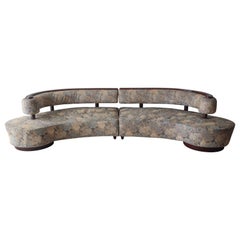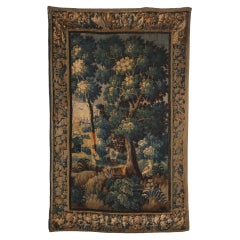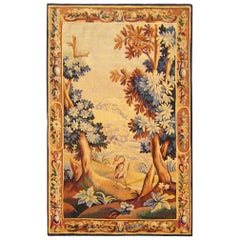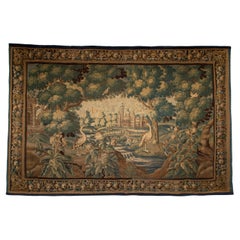
8ft 18th Century Hand Woven Aubusson Verdure Tapestry
View Similar Items
8ft 18th Century Hand Woven Aubusson Verdure Tapestry
About the Item
- Creator:Royal Manufacture of Aubusson (Maker)
- Dimensions:Height: 98 in (248.92 cm)Width: 67 in (170.18 cm)Depth: 0.125 in (3.18 mm)
- Style:Aubusson (In the Style Of)
- Materials and Techniques:
- Period:
- Date of Manufacture:circa 1800s
- Condition:Wear consistent with age and use.
- Seller Location:Las Vegas, NV
- Reference Number:1stDibs: LU1399238986702
Royal Manufacture of Aubusson
Favorites of European nobility and royalty for more than 300 years, the tapestries and textiles made by the Royal Manufacture of Aubusson remain legendary for their exceptional quality and grand designs.
The origins of Aubusson’s textiles date back to the 14th century, when residents of the town of Aubusson, located at the base of the Creuse river in France, started small weaving workshops. When skilled weavers from Flanders, Belgium, arrived in Aubusson, seeking refuge and settlement, the town’s weaving industry flourished.
Aubusson was granted the Royal Manufacture title by King Louis XIV in 1665. Along with pieces by rival workshops such as Gobelins and Beauvais, Aubusson’s textiles, carpets and tapestries were prized for their meticulous designs. Early Royal Manufacture of Aubusson works resemble Turkish rugs and Asian textiles, which were popular with European royalty. In later years, though, Aubusson’s weavers shifted their style to reflect Western European and Caucasian rugs as well as Italian Renaissance style, incorporating floral, religious and pastoral themes into the tapestries.
Throughout the 18th century, Aubusson’s tapestries and rugs remained among the most desired by the European aristocracy. An inventory compiled in 1786 listed more than 100 Aubusson carpets at the Palace of Versailles. After the French Revolution, many workshops, including those of Aubusson, lost their Royal Manufacture status. Upholstered and machine-made carpets also became more dominant in the industry.
In 1869, the establishment of the École Nationale des Arts Décoratifs d’Aubusson sparked a renewed interest in Aubusson tapestries, which the school still produces today. Although the advent of wallpaper during the late 19th and early 20th century reduced consumer demand for tapestries as wall decor, Aubusson adapted to the shift towards modernist style. Artists like Henri Matisse and Pablo Picasso often had their artworks translated into tapestries.
Aubusson’s carpets and tapestries continue to be coveted by interior designers and collectors of 18th-century, mid-19th-century and Napoleon III textiles and furniture. Aubusson’s history of weaving, wool production, spinning and dyeing is on UNESCO’s list of Intangible Cultural Heritage of Humanity.
On 1stDibs, find a range of antique Royal Manufacture of Aubusson wall decorations, Asian-inspired art and furniture, carpets and more.
More From This Seller
View All20th Century Modern Paintings
Acrylic
20th Century Candelabras
Iron
Antique 19th Century Planters and Jardinieres
Wood
Mid-20th Century Mid-Century Modern Sofas
Fabric, Wood
Early 20th Century Country Night Stands
Tapestry, Wood
Early 20th Century Rustic Benches
Oak
You May Also Like
Antique 18th Century French Aubusson Tapestries
Wool, Linen
Antique 18th Century French Tapestries
Tapestry, Wool
Antique 18th Century French Aubusson Tapestries
Wool
Antique 18th Century French Baroque Tapestries
Wool, Silk
Antique 18th Century French Tapestries
Wool
Antique Late 18th Century French Aubusson Tapestries
Wool, Silk
